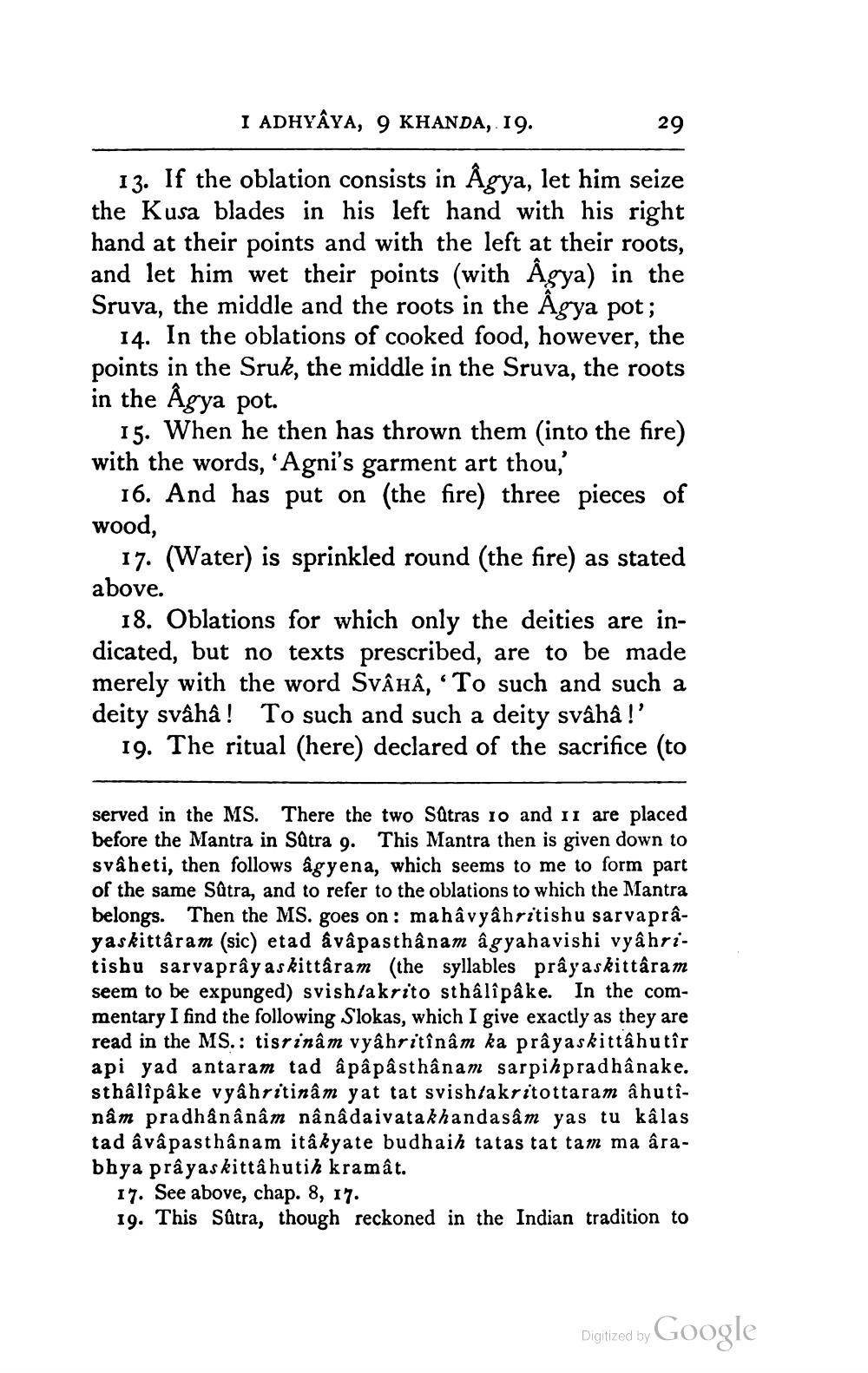________________
I ADHYAYA, 9 KHANDA, 19.
13. If the oblation consists in Âgya, let him seize the Kusa blades in his left hand with his right hand at their points and with the left at their roots, and let him wet their points (with Agya) in the Sruva, the middle and the roots in the Agya pot;
14. In the oblations of cooked food, however, the points in the Sruk, the middle in the Sruva, the roots in the Agya pot.
15. When he then has thrown them into the fire) with the words, 'Agni's garment art thou,'
16. And has put on (the fire) three pieces of wood,
17. (Water) is sprinkled round (the fire) as stated above.
18. Oblations for which only the deities are indicated, but no texts prescribed, are to be made merely with the word SvÂHÂ, `To such and such a deity svâhâ ! To such and such a deity svâhâ !'
19. The ritual (here) declared of the sacrifice (to
served in the MS. There the two Satras 10 and 11 are placed before the Mantra in Sätra 9. This Mantra then is given down to svaheti, then follows âgyena, which seems to me to form part of the same Sûtra, and to refer to the oblations to which the Mantra belongs. Then the MS. goes on: mahâvyâhritishu sarvaprayaskittâram (sic) etad âvâpasthanam âgyahavishi vyâhritishu sarvaprây a skittâram (the syllables prây askittâram seem to be expunged) svishtakrito sthálîpâke. In the commentary I find the following Slokas, which I give exactly as they are read in the MS.: tisrinâm vyâhritînam ka prâya skittâhutîr api yad antaram tad â pâpâsthanam sarpihpradhânake. sthâlîpâke vyâhritinâm yat tat svishtakritottaram âhutinam pradhânânâm nânâdaivatakhanda sam yas tu kalas tad âvâpasthanam itakyate budhaih tatas tat tam ma arabhya prayas kittâ hutih kramât.
17. See above, chap. 8, 17. 19. This Sūtra, though reckoned in the Indian tradition to
Digitized by Google




